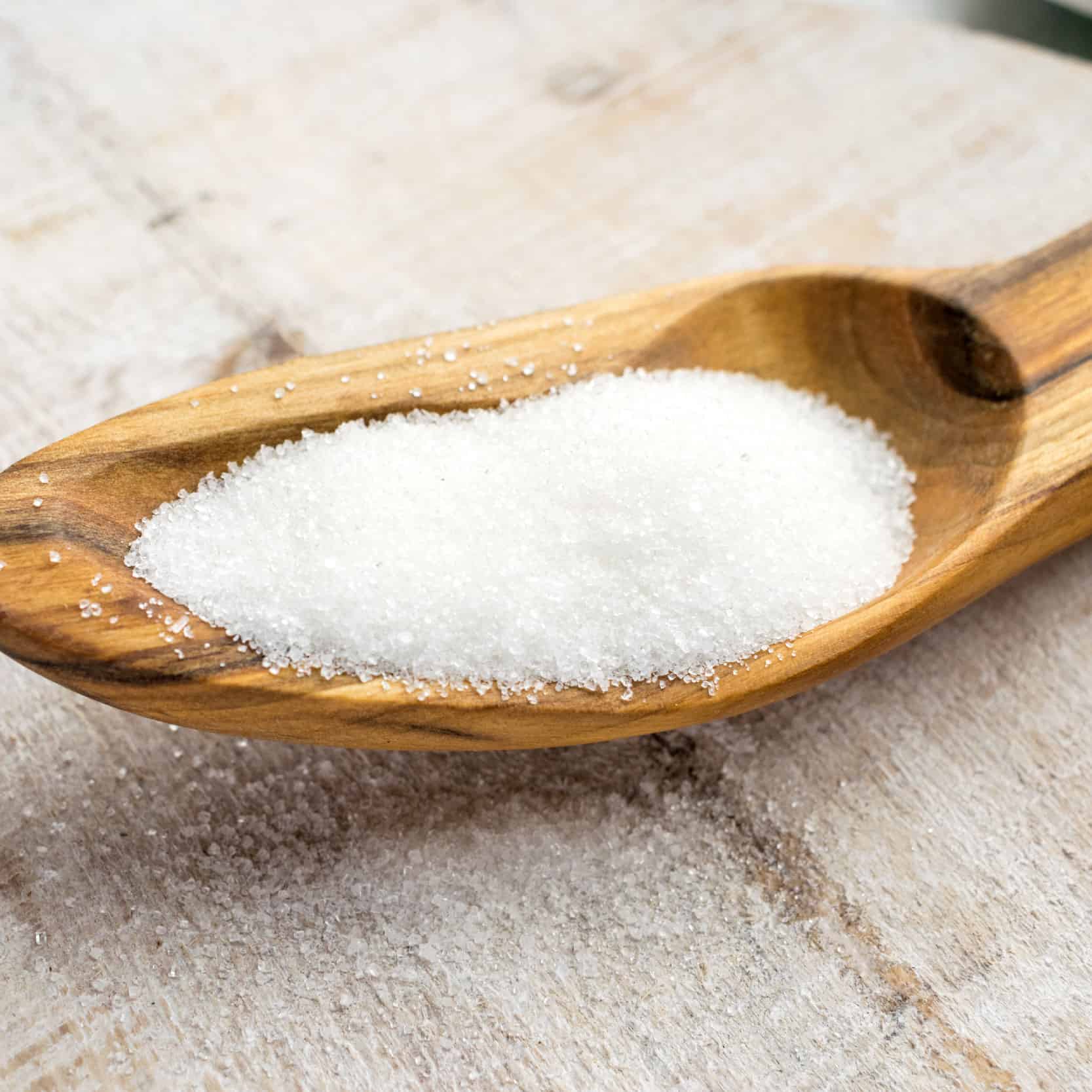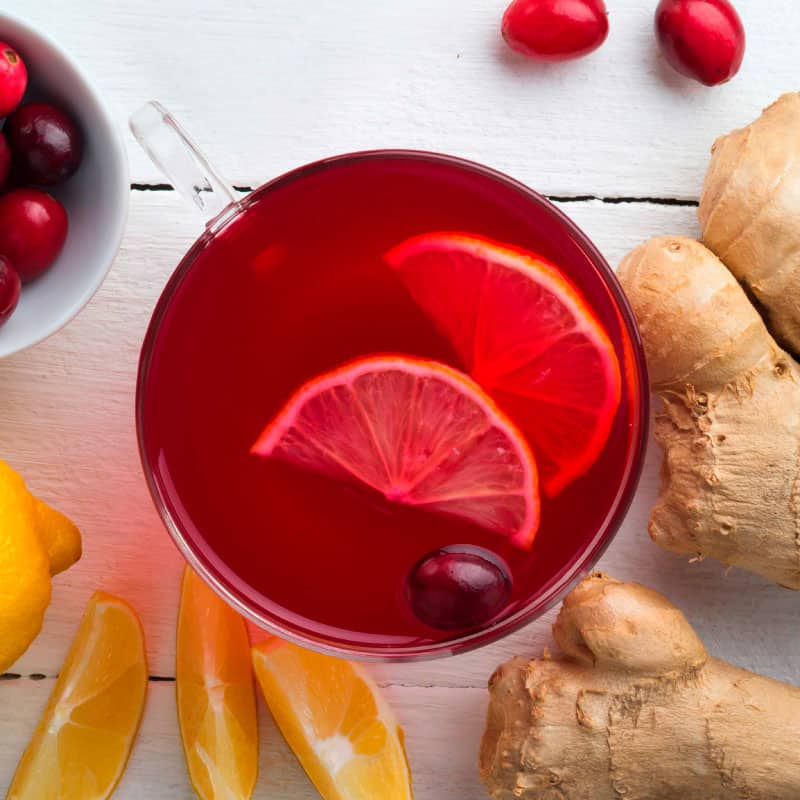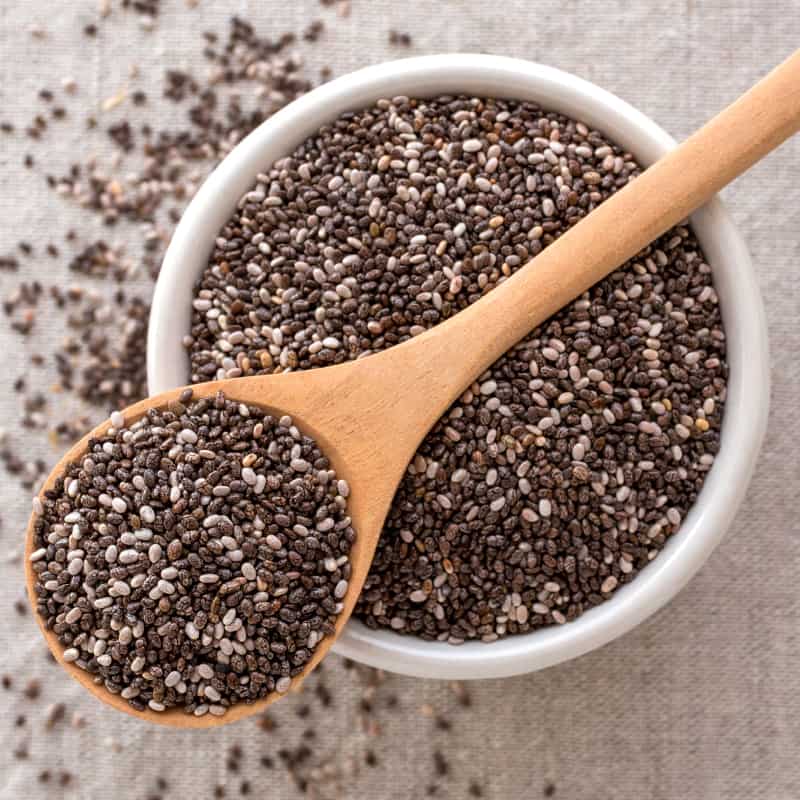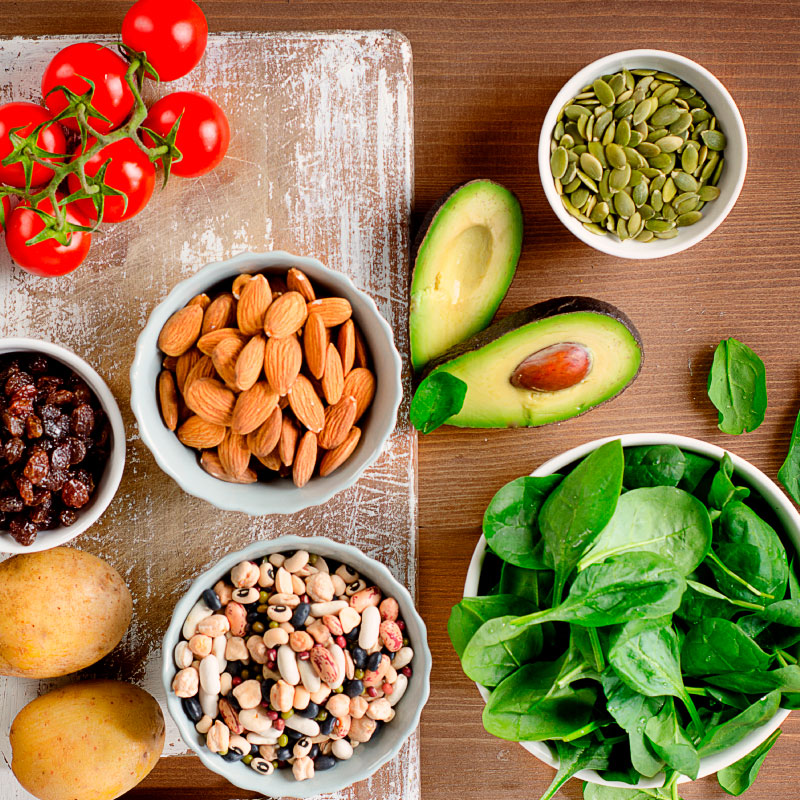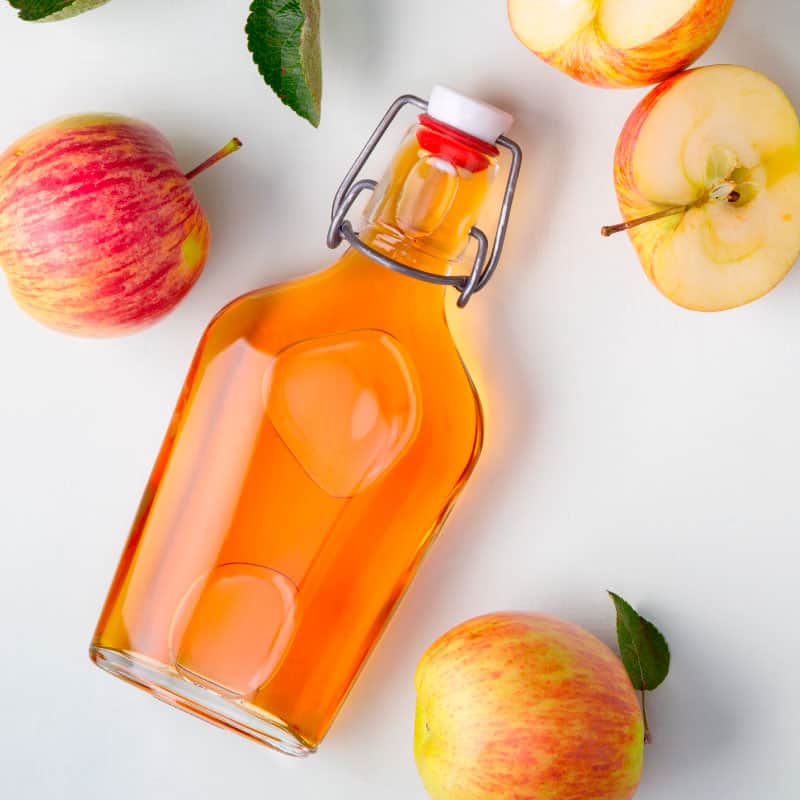This Dr. Axe content is medically reviewed or fact checked to ensure factually accurate information.
With strict editorial sourcing guidelines, we only link to academic research institutions, reputable media sites and, when research is available, medically peer-reviewed studies. Note that the numbers in parentheses (1, 2, etc.) are clickable links to these studies.
The information in our articles is NOT intended to replace a one-on-one relationship with a qualified health care professional and is not intended as medical advice.
This article is based on scientific evidence, written by experts and fact checked by our trained editorial staff. Note that the numbers in parentheses (1, 2, etc.) are clickable links to medically peer-reviewed studies.
Our team includes licensed nutritionists and dietitians, certified health education specialists, as well as certified strength and conditioning specialists, personal trainers and corrective exercise specialists. Our team aims to be not only thorough with its research, but also objective and unbiased.
The information in our articles is NOT intended to replace a one-on-one relationship with a qualified health care professional and is not intended as medical advice.
Top 9 Nuts and Their Health Benefits
January 2, 2018
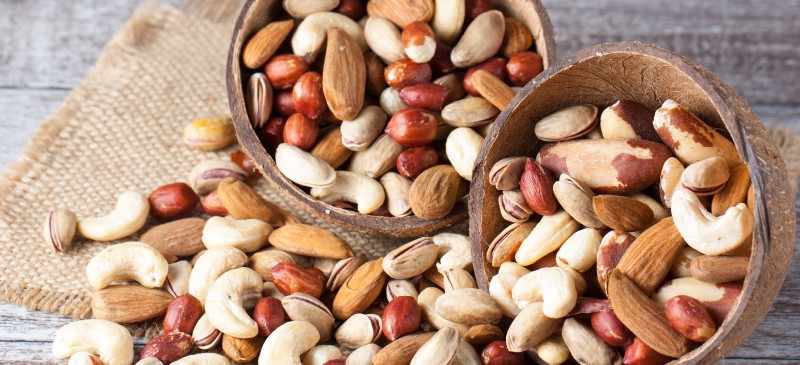
More and more health benefits have emerged recently linking nut consumption to a decreased risk of chronic disease. A recent study in the Journal of the American College of Cardiology, for example, showed that a higher intake of some of the healthiest nuts was associated with a lower risk of coronary heart disease. (1)
Other studies have also turned up impressive results, showing that eating more nuts could even protect against cancer. (2, 3)
Take a look at any nutritional value of nuts chart, and it’s easy to see why they’re so healthy. They’re high in fiber and protein plus loaded with heart-healthy fats.
But what are the healthiest nuts, and are some better for you than others?
Types of Nuts
A nut is a type of fruit made up of a hard shell with an edible seed inside. Nuts can be classified as either true botanical nuts or culinary nuts. In fact, many nuts that are commonly used in cooking and baking are not actually true nuts but are used and consumed in the same way. For example, are peanuts nuts? Although considered a culinary nut, peanuts are actually a type of legume.
Nuts can be grouped into a few different classes, including true nuts, drupes, gymnosperm seeds and angiosperm seeds.
- True nuts: These nuts fit the definition of a botanical nut, meaning that they do not open to release their seeds. Chestnuts, hazelnuts and acorns are a few examples of true botanical nuts.
- Drupes: A drupe is a type of fruit that contains an outer fleshy part surrounding a shell with a seed inside. Peaches, plums and cherries are considered drupes, as are walnuts, cashews, almonds and pecans.
- Gymnosperm seeds: These are a type of seed that are not enclosed. Pine nuts and gingko nuts are classified as gymnosperm seeds.
- Angiosperm seeds: These seeds are contained within a larger fruit. Some examples are Brazil nuts, macadamia nuts and peanuts.
Nuts types are also further separated by how they grow. As their names suggest, tree nuts like almonds, walnuts and cashews grow on trees while groundnuts like peanuts are a type of legume that ripen underground.
To make things even more complicated, nuts can be further broken down into how they are processed or produced. Roasted nuts, for example, may have a different nutrient profile than nuts with added sugars or flavors. Of these, the healthiest nuts and seeds are those that are minimally processed without added ingredients.
Related: Pili Nuts: The Keto-Friendly Nuts that Support the Heart & Bones
9 Healthiest Nuts
1. Almonds
Almonds are high in fiber, protein and vitamin E along with several other important micronutrients. A one-ounce serving of almonds contains approximately: (4)
- 161 calories
- 6.1 grams carbohydrates
- 5.9 grams protein
- 14 grams fat
- 3.4 grams dietary fiber
- 7.4 miligrams vitamin E (37 percent DV)
- 0.6 miligram manganese (32 percent DV)
- 75.7 miligrams magnesium (19 percent DV)
- 0.3 miligram riboflavin (17 percent DV)
So are almonds good for you? Studies show that adding a few servings of almonds into your diet can be incredibly beneficial to your health. In one study, eating almonds every day resulted in a decrease in cholesterol levels and belly fat. (5) Another study published in the Journal of the American College of Nutrition showed that increasing almond intake helped improve insulin sensitivity and reduced cholesterol in adults with prediabetes. (6)
Other studies have found that almonds may also increase beneficial HDL cholesterol, enhance memory function and even protect against breast cancer. (7, 8, 9)
2. Brazil Nuts
The Brazil nut is one of the healthiest nuts on the planet. It is especially high in selenium, an important mineral with antioxidant activities that helps fight against harmful free radicals to prevent cell damage. One ounce (or about six kernels) of Brazil nuts contains approximately: (10)
- 185 calories
- 3.5 grams carbohydrates
- 4 grams protein
- 18.8 grams fat
- 2.1 grams dietary fiber
- 542 micrograms selenium (774 percent DV)
- 106 miligrams magnesium (27 percent DV)
- 0.5 miligram copper (25 percent DV)
- 205 miligrams phosphorus (20 percent DV)
- 0.3 miligram manganese (17 percent DV)
These Brazilian nuts are also chock-full of health benefits. In a 2013 study, a single serving of Brazil nuts was found to significantly lower bad LDL cholesterol and raise good HDL cholesterol within just nine hours. (11)
Due to their high selenium content, Brazil nuts may also be beneficial when it comes to cancer prevention. A study from Canada found that selenium could help prevent the development of lung cancer in those with low selenium status. (12)
3. Cashews
Cashews are a popular nut that provide a hearty dose of healthy fats as well as plenty of health benefits. But are cashew nuts good for you? One ounce of cashews contains approximately: (13)
- 155 calories
- 9.2 grams carbohydrate
- 5.1 grams protein
- 12.3 grams fat
- 0.9 gram dietary fiber
- 0.6 miligram copper (31 percent DV)
- 0.5 miligram manganese (23 percent DV)
- 81.8 miligrams magnesium (20 percent DV)
- 166 miligrams phosphorus (17 percent DV)
So why exactly are cashews good for you? Cashews are full of antioxidants that can help protect against free radical damage and reduce the risk of chronic disease. One study found that including cashews in the diet helped increase the antioxidant capacity in patients with metabolic syndrome. (14)
Cashews are also lower in fat than other types of nuts but still provide a good amount of heart-healthy fats. According to a study in Food Science & Nutrition, nearly 80 percent of the fats in cashews are healthy polyunsaturated and monounsaturated fats. (15)
4. Hazelnuts
Hazelnuts are a great source of manganese and copper as well as many other essential micronutrients. One ounce of hazelnuts contains approximately: (16)
- 176 calories
- 4.7 grams carbohydrates
- 4.2 grams protein
- 17 grams fat
- 2.7 grams dietary fiber
- 1.7 miligrams manganese (86 percent DV)
- 0.5 miligram copper (24 percent DV)
- 4.2 miligrams vitamin E (21 percent DV)
- 0.2 miligram thiamine (12 percent DV)
Hazelnuts are one of the healthiest nuts when it comes to reducing the risk of heart disease. A study out of Turkey found that a hazelnut-enriched diet reduced total cholesterol by nearly 8 percent, dropped triglycerides by 7 percent and increased beneficial HDL cholesterol by 6 percent compared to a control group. (17)
Thanks to their impressive nutrient density, another study published in the European Journal of Clinical Nutrition showed that eating hazelnuts even helped boost vitamin E concentrations in the blood. (18)

5. Macadamia Nuts
Macadamia nuts are especially high in fat as well as nutrients like manganese and thiamine. One ounce of macadamia nuts contains approximately: (19)
- 203 calories
- 2.2 grams carbohydrate
- 4 grams protein
- 21.4 grams fat
- 2.4 grams dietary fiber
- 1.2 miligrams manganese (58 percent DV)
- 0.3 miligram thiamine (23 percent DV)
- 0.2 miligram copper (11 percent DV)
The heart health-promoting benefits of macadamia nuts secure their spot as one of the healthiest nuts. One study showed that short-term macadamia nut consumption helped reduce markers of oxidative stress and inflammation in 17 patients. (20)
Another study published in the Journal of Nutrition found that eating a diet rich in macadamia nuts helped reduce both total and bad LDL cholesterol in 25 adults with high cholesterol. (21)
6. Valencia Peanuts
Peanuts are one of the most common nuts that might pop to mind first, but are peanuts healthy? Peanuts are a good source of many essential vitamins and minerals and can be a healthy dietary addition. One ounce of dry-roasted peanuts contains approximately: (22)
- 164 calories
- 6 grams carbohydrates
- 6.6 grams protein
- 13.9 grams fat
- 2.2 grams dietary fiber
- 0.6 miligram manganese (29 percent DV)
- 49.3 miligrams magnesium (12 percent DV)
- 40.6 micrograms folate (10 percent DV)
- 1.9 miligrams vitamin E (10 percent DV)
- 100 miligrams phosphorus (10 percent DV)
So why are peanuts good for you? One massive study made up of 83,818 women showed that a higher consumption of nuts and peanut butter reduced the risk of developing type 2 diabetes. (23) Another study found that eating more peanuts decreased several risk factors of heart disease, such as triglyceride levels. (24)
The benefits of eating peanuts may even begin before birth. One study found that eating peanuts at least once per week during pregnancy decreased the risk of allergic disease in children. (25)
Mold is a common concern with peanuts as they are grown underground in moisture. Valencia peanuts are a peanut variety grown in dryer climates, making them less prone to the growth of dangerous mold.
7. Pecans
Pecans are another type of nut notorious for their cardiovascular benefits. They are a rich source of manganese as well as several other key vitamins and minerals. One ounce of pecans contains approximately: (26)
- 195 calories
- 4 grams carbohydrates
- 2.6 grams protein
- 20.3 grams fat
- 2.7 grams dietary fiber
- 1.3 miligrams manganese (64 percent DV)
- 0.3 miligram copper (17 percent DV)
- 0.2 miligram thiamine (12 percent DV)
- 1.3 miligrams zinc (9 percent DV)
- 34.2 miligrams magnesium (9 percent DV)
Eating pecans may help reduce several risk factors of heart disease, including decreasing cholesterol levels. A study published in the Journal of the American Dietetic Association showed that pecans could help lower LDL cholesterol levels, even in people with normal cholesterol. (27)
Eating pecans may also boost antioxidant status to neutralize free radicals and fight off chronic disease. One study found that increasing pecan intake for four weeks significantly improved blood antioxidant profiles. (28)
8. Walnuts
Walnuts can provide a good amount of protein as well as some manganese, copper and magnesium. One ounce of walnuts contains approximately: (29)
- 183 calories
- 3.8 grams carbohydrates
- 4.3 grams protein
- 18.3 grams fat
- 1.9 grams dietary fiber
- 1 miligram manganese (48 percent DV)
- 0.4 miligram copper (22 percent DV)
- 44.2 miligrams magnesium (11 percent DV)
- 96.9 miligrams phosphorus (10 percent DV)
Walnuts are also an excellent source of plant-based omega-3 fatty acids, which can slash inflammation and decrease the risk of disease.
Some animal studies have found that walnuts may also improve brain function. For example, a 2011 animal study reported that supplementing rats with walnuts resulted in significant improvement in learning and memory. (30) Walnuts may also improve heart health by reducing cholesterol levels and blood pressure. (31, 32)
9. Pistachios
High in a wide array of vitamins and minerals, pistachios are also one of the best nuts for protein. Still, many people wonder: Are pistachios good for you? One ounce of dry-roasted pistachios contains approximately: (33)
- 161 calories
- 7.8 grams carbohydrates
- 6 grams protein
- 13 grams fat
- 2.9 grams dietary fiber
- 0.4 miligram copper (19 percent DV)
- 0.4 miligram manganese (18 percent DV)
- 0.4 miligram vitamin B6 (18 percent DV)
- 0.2 miligram thiamine (16 percent DV)
- 137 miligrams phosphorus (14 percent DV)
So are pistachios healthy? A study published in the Journal of the American College of Nutrition found that eating two to three ounces per day of pistachios improved blood lipid levels and lowered the ratio of bad LDL cholesterol to good HDL cholesterol. (34) Another study found that eating pistachios helped maintain normal blood sugar levels after eating a high-carbohydrate meal. (35)
Other research has suggested that pistachios could improve motor function, reduce oxidative stress and inflammation and enhance blood vessel function, ranking them among the healthiest nuts around. (36, 37, 38)
Kola Nut: The Little-Known Ingredient that Supports Energy Levels
Are There Unhealthy Nuts?
Not all nuts are created equal. While there are plenty of nuts jam-packed with nutrients, some types of processing may diminish the health benefits of nuts.
Pre-shelled nuts, for instance, leave the natural casings of the nut exposed, causing the natural fats and oils to break down and become rancid more easily.
Nuts that are pre-seasoned or flavored can also be high in added sugar or salt, reducing their health properties. Even nuts that are roasted can be unhealthy because they are roasted in harmful hydrogenated vegetable oils and fats.
Nut butters are also not necessarily healthy — though they can be — since many types are chock-full of sugar, salt and hydrogenated oils.
Opt for unsalted, dry-roasted nuts whenever possible, and look for raw and organic nut butters with minimal added ingredients to ensure you’re getting the best quality.
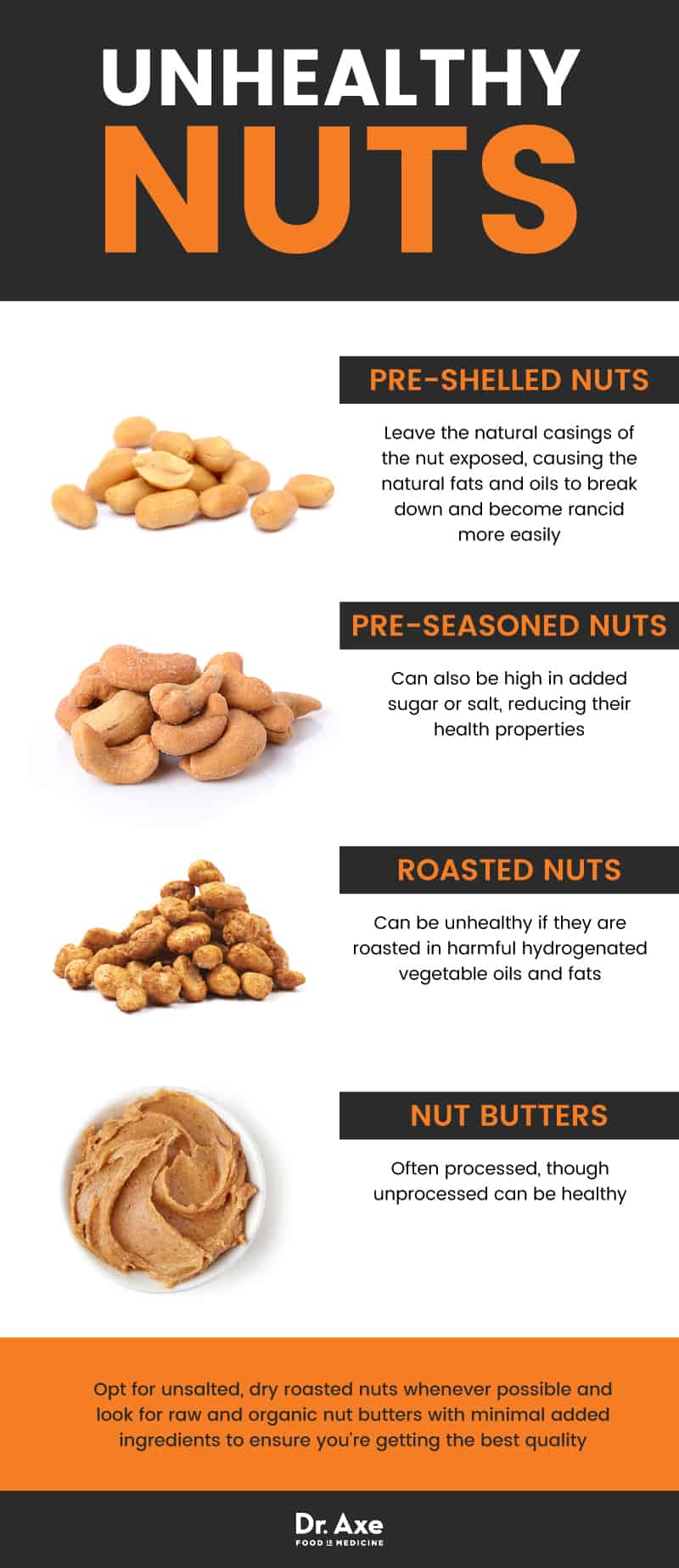
Precautions
Many types of nuts are loaded with health benefits, but they’re also loaded with calories as well — and when it comes to nuts, more is not always better. Be sure to moderate your portion sizes and limit it to one ounce at a time to reap the health rewards of nuts without taking a toll on your waistline.
Additionally, nut allergies are common and can be dangerous. A peanut allergy, for instance, can cause skin reactions, digestive problems and even anaphylaxis, which can be life-threatening. Tree nut allergies are also fairly common and can cause an allergic reaction in response to eating other types of nuts, such as almonds, walnuts, cashews and pistachios.
Keep in mind that even the healthiest nuts can become unhealthy when they’re loaded with extra ingredients. Look for unsalted, dry-roasted nuts, and skip the heavily processed and flavored nuts that are high in sugar, salt and hydrogenated oils.
Final Thoughts on Healthiest Nuts
- Nuts provide many important nutrients, and nut consumption has even been associated with health benefits like a reduced risk of cancer and heart disease, particularly when consuming the healthiest nuts.
- The healthiest nuts include almonds, Brazil nuts, cashews, hazelnuts, macadamia nuts, Valencia peanuts, pecans, walnuts and pistachios.
- Nuts that are heavily processed or contain added ingredients can actually be high in added sugars and sodium. Opt for minimally processed nuts without extra ingredients to maximize health benefits.
- Additionally, keep intake in moderation, and remember to combine with a balanced diet and healthy lifestyle to see the most results.





